The chorus of Bayerische Rundfunk has named Howard Arman as its new artistic director, starting mid-2016. Howard, 61, is presently music director at the Lucerne theatre and symphony orchestra. He succeeds Peter Dijkstra.
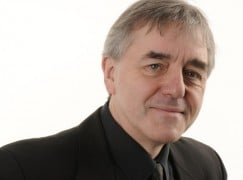
The chorus of Bayerische Rundfunk has named Howard Arman as its new artistic director, starting mid-2016. Howard, 61, is presently music director at the Lucerne theatre and symphony orchestra. He succeeds Peter Dijkstra.

A series of edicts have come down from the BBC Trust today on the positioning of its radio stations. The most radical is a drastic cut to live music output on Radio 1.
Classical Radio 3 escapes fairly unscathed except for a stipulation that it should make its output more recognisable:
Radio 3’s distinctiveness from commercial station Classic FM has also been debated extensively. While Radio 3 overall is a distinctive station, in terms of its approach to classical music and mix of other programming, there are some parts of the schedule where similarities exist. Radio 3 should seek to increase choice for radio listeners by minimising any programmes and features that are similar to Classic FM’s. It should focus on its strengths, by maximising its distinctiveness across its whole output, without sacrificing the combination of expertise and accessibility that has been achieved in recent years.
The Trust also called for a small cut in drama on Radio 3.
Full report here.

The Royal Opera House has received planning permission to modify its forbidding facade with more doors.
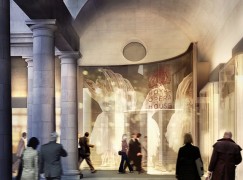
Who pays? Full story here.
Apply below.
Don’t forget long trousers and anti-midge cream.
Oh, and you won’t get paid.
Press release:

HORN PLAYERS REQUIRED FOR WORLD PREMIERE OF A NEW WORK FROM PULITER PRIZE/GRAMMY AWARD-WINNING ‘ECO-COMPOSER’ JOHN LUTHER ADAMS AT EAST NEUK FESTIVAL ON 5 JULY 2015
The East Neuk Festival (ENF) is sounding the bugle far and wide for a herd (?) of horn players looking for outdoor musical adventures and challenges in rural Fife this summer.
Following its hugely successful 2013 UK premiere of John Luther Adams’ Inuksuit for 30 percussionists, ENF has commissioned Across the Distance for massed horns for the finale of this year’s Festival. Led by SCO’s highly acclaimed young principal horn, Alec Frank-Gemill, and seven other top professional horn players from around the UK, the performance line-up is 32.
Across The Distance will be performed for a promenade audience in and around the parkland and gardens of the glorious Cambo House and estate situated just south of St Andrews in the East Neuk of Fife. ENF director Svend Brown enthuses about the prospect of this unique performance: “The idea is that a ring of horn players will start by surrounding the audience, and as the piece progresses they move further and further away until the last notes are heard from 50 or 100 metres away… ‘across the distance’. If Inuksuit was anything to go by, this will be a memorable experience for performers and audiences alike.”
John Luther Adams is renowned for his large scale works inspired by the environment and written for outdoor performance, embracing the calls and sounds of wildlife and nature. ‘One of the most original musical thinkers of the new century’ (Alex Ross/The New Yorker), he recently won the Pulitzer, William Schuman and Grammy Awards for his work, Beyond Ocean. Adams lives in Alaska and New Mexico and strives in his work to create musical counterparts to the natural world around him: “If we’re listening deeply, if we’re listening carefully, if we’re listening with our broadest awareness,” he explains, “both noise and silence lead us to the same understanding, which is that
the whole world is music.”
http://www.johnlutheradams.com
DETAILS AND INFORMATION
EVENT World premiere of Across The Distance for massed horns in F and in B-flat by John Luther Adams
QUALIFICATIONS minimum Grade 5
AGE no limits either way
Participation is free.
AVAILABILITY
26 April 1100-1500hrs Preliminary workshops/auditions, Glasgow Royal Concert Hall
27 June 1100-1600hrs Rehearsal, Cambo Estate Fife
4 July 1600-1800hrs Dress Rehearsal, Cambo Estate Fife
5 July 1400-1800hrs Performance, Cambo Estate Fife
APPLICATION FORM: http://www.eastneukfestival.
Amid all the tributes that will mark tomorrow’s centenary of the birth of Sviatoslav Richter, none will find the right adjective to go before the noun ‘pianist’. Richter was unlike any pianist before or since, so much so that the very term pianist distorts and belittles the essence of his being.
Valery Gergiev once told me that there was no Russian opera or orchestral work, no matter how obscure or long-unperformed, that Richter did not know. Richter was a walking Wikipedia of music, with an infallible taste that weeded out the gems from the dross and with an authority that was irrefutable. As music director of the Mariinksy, Gergiev called him often for guidance.
Richter knew the piano repertoire from Bach to Britten, the symphonic canon in its entirety and a vast range of salon and art songs that he played with great relish with his life’s companion, Nina Dorliak.

But when he sat at the piano, all on his own, Richter was all forms in one. He was the complete musician.
After Franz Liszt, was there ever a greater musician at the piano?

There will never be another Richter (March 20 1915 – August 1, 1997).
Backstage last night at Carnegie Hall.
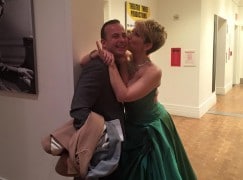
Supply your own captions.
On the eve of BBC4’s screening of the hyperbolic film claiming that Bach’s late cello suites were written by his wife, an authority on Bach’s compositional processes has taken both the thesis and its Australian author to the cleaners.
Ruth Tatlow, a Stockholm-based musicologist who was research consultant to John Eliot Gardiner during his Bach Pilgrimage, dismisses the ‘sensational claims’ of Martin Jarvis and accuses him, from a feminist perspective, of damaging the reputation of Anna Magdalena. She writes, inter alia:

The idea of Anna Magdalena as a composer appeals to a modern sense of gender equality and to the widespread desire to raise the status of misrepresented women of the past. In recent times many scholars have worked actively and successfully to redress the gender imbalance that is so deeply established in the histories of music. It is undisputed that women throughout the ages have played a vital role in society, often standing behind the success of many a famous male counterpart, yet for various reasons their role has been silenced, whether due to the paucity of surviving documentation or the skewed perspective of the narratives.
It would be wonderful if we knew more about the level of musical accomplishment of the women in Bach’s life, and the extent to which they contributed to Bach’s activities. We know that the Bach household, which included many women, became a veritable cottage industry of copyists during the weekly rhythm of cantata preparations, particularly in the first couple of years in Leipzig. We know about Bach’s male students through school registers at the boys-only St Thomas School, 7 but we do not know much about the education or level of achievement of Bach’s female students, if he had any. Did he teach his daughters? Did he actively help Anna Magdalena to develop her musical skills? Was she able to maintain her singing career in Leipzig? Was she known as Bach’s wife, mother of his children, or as an accomplished woman and musician in her own right?
Those leading the task of rewriting the history of women have a responsibility to do so with integrity. A necessary starting point in such an endeavour is to ensure that any new insight is logical, based on fact and accurately communicated. To do otherwise is a disservice to the cause. Jarvis’s claim that Anna Magdalena and not her husband was the composer of the Cello Suites is a case in point. That the ‘simpler’ Cello Suites are allegedly not up to the ‘complex and intellectually challenging’ musical standard of the Unaccompanied Sonatas and Partitas for Violin forms part of his argument for Anna Magdalena as its composer. Clearly he did not intend to suggest the ‘inferior therefore female’ implication in this argument.
Ouch!
You can read the full demolition job by Dr Tatlow (pictured) demolition exclusively here, via Slipped Disc.

Meanwhile, the composer Sally Beamish, who narrates the dubious film, has retreated from her previous endorsement, saying she is now ‘on the fence’ about Anna Magdalena’s authorship of Bach works.
He played for seven music directors, and interpreted for Giulini.
From CSO archivist, Frank Villella:
Adrian Da Prato, a member of the Chicago Symphony Orchestra’s violin section from 1946 until 1996, died on Tuesday, March 17, 2015, in Chicago. He was 94.
Born in Barga in 1920, in the region of Tuscany, Da Prato became fascinated with the sound of the violin while attending silent movies as a child in his native Italy. The films were accompanied by piano and violin, and his attention invariably would turn from the motion picture to the violinist in the pit.
Da Prato began violin lessons at age nine after his family arrived in America. In Chicago he attended Lane Technical High School and the American Conservatory of Music, two schools he remembered warmly for instilling enthusiasm through their mutual support and continuous exchange of ideas among talented students. His first teacher was Pellegro Pacini, and he later studied with Scott Willits and CSO concertmaster John Weicher.
After being inducted in the 33rd Infantry Division in World War II, Da Prato later was assigned to special services in Hawaii, where he was active in all facets of performing for the troops throughout the islands. He was a member of the Illinois Symphony Orchestra and the Civic Orchestra of Chicago before music director Désiré Defauw invited him to join the Chicago Symphony Orchestra in 1946.
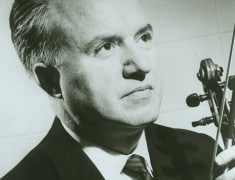
Da Prato cherished his friendship with Carlo Maria Giulini, the Orchestra’s principal guest conductor from 1969 until 1972, which dated back to 1955 when the Italian maestro arrived in Chicago for his American debut. He spoke little English and Da Prato was asked to help translate for him; but, as he recalled, “There was no real problem, because the rapport between the Orchestra and Maestro Giulini was such that words really were not necessary.”
Da Prato also was a member of the Chicago Strings, which toured throughout the United States and Europe. Additionally, he performed in chamber ensembles and in many schools throughout Chicago. His violin was a Peter Guarnerius of Mantua, dated 1710.
After forty-nine years with the Orchestra and serving under seven music directors—Defauw, Artur Rodzinski, Rafael Kubelík, Fritz Reiner, Jean Martinon, Sir Georg Solti, and Daniel Barenboim—Da Prato retired in 1996. In his retirement, Da Prato was a member of the Chicago Symphony Orchestra Alumni Association for many years.
In an interview from the 1970s, Da Prato reflected on his time with the Orchestra. “When the players perform well—having been together, played together, lived together on tour, and seen each other every day—it helps enormously because we fit in. It’s just like a string quartet. You can have the four greatest players in the world, individually great, who will play together, but there must be that unity of purpose. Like an old bottle of wine, it has to have a good vintage to start out with, then it reaches a point where its fullness is realized. When an orchestra works together it grows; that is the beautiful experience. It is magic. It is a great orchestra.”
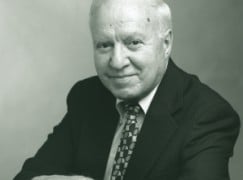
He is survived by his niece Paula Bertolozzi and several grandnieces, great-grandnieces, and great-grandnephews. There will be a funeral service on Friday, March 20, 2015, at Cumberland Chapels (8300 West Lawrence Avenue in Norridge) from 9:00 until 11:30 a.m., followed by mass at Our Lady Mother of the Church (8701 West Lawrence Avenue). In lieu of flowers, the family has requested donations to the Civic Orchestra of Chicago.
The International Federation of Musicians has published a reminder for those tempted to attend auditions in Berlin next month for the Malaysian Philharmonic Orchestra. The MPO sacked nine musicians three years ago and continues to drag its feet in a compensation case that is going through the courts.
The MPO is under international boycott. Don’t go there. (That includes conductors, but you know what they are like.)
Read warning here.
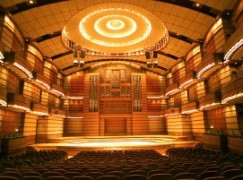
The music director of the New York Philharmonic has been chosen to give the annual Royal Philharmonic Society Lecture in London, with the title ‘Orchestras in the 21st Century; a new paradigm’.
Gilbert last month announced he’s stepping down from the NY Philharmonic post.
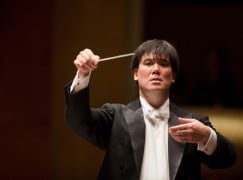
Royal Philharmonic Society Lecture
Alan Gilbert: Orchestras in the 21st Century; A New Paradigm
Wednesday 15 April at 7pm
Milton Court Concert Hall, Silk Street, London EC2Y 9BH
Javier Camarena has crashed out of tonight’s Barber of Seville at the Vienna State Opera.
Step up Juan José de Leon, a Texan (ex-Pittsburgh Opera-, who was flown in last-minute from Stuttgart.
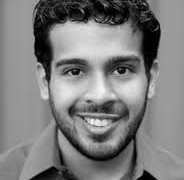
The files have been brought out of the vaults. Two days ago, the Mayor of the 4th arrondissement of Paris refused to allow a plaque to be affixed on Henri Dutilleux’s apartment, claiming he had been a Nazi collaborator. Now, the curator of the national Résistance museum has published the facts, proving that Dutilleux and his wife Geneviève Joy were active in the underground fight against the German occupation and closely associated with some of its heroes.
We publish the curator’s letter below. It now seems likely that Dutilleux will get his plaque, though the smear will take some time to fade from his reputation, the more so since it has been picked up by German media.
The question remains as to how the foolish mayor of the 4th arrondissement and a Paris city councillor were fed false information about an innocent, and indeed honourable, member of the musical community.
The smear harks back to the 1960s and 1970s when Dutilleux and traditional composers were locked in dirty war with the ‘progressive’ forces of Pierre Boulez and the Left. Both sides behaved badly. Several composers lost their careers for falling on the wrong side. It would be fitting, in the month of Boulez’s 90th birthday, if peace was made and tribute was paid at last to Henri Dutilleux, among other collateral victims of the modernist crusade.

POUR LA MEMOIRE D’HENRI DUTILLEUX
Henri Dutilleux, le compositeur résistant, était membre du comité d’honneur du musée de la Résistance nationale (MRN) aux côtés de l’écrivain résistant Jean Cassou, du cinéaste résistant Jean-Paul Lechanois, du philosophe résistant Vladimir Jankelevitch, de l’artiste résistante Madeleine Milhaud, du poète résistant Pierre Seghers, des peintres résistants Boris Taslitzky et Édouard Pignon, ainsi que des résistant(e)s Lucie et Raymond Aubrac, Renée Bédarida, Jacques Debu-Bridel, Vincent Badie, Georges Montaron, Pierre Sudreau, Christian Pineau, Louis Terrenoire, Charles Lederman, Joel le Tac, Hélène Langevin, Henri-René Ribière, Marie-Claude Vaillant-Couturier, Jacques Piette, Gaston Cusin, Pierre Meunier, etc.
Une place justifiée qui honore le musée.
Avec son épouse la pianiste Geneviève Joy, résistante elle aussi, le 24 juin 2004, il présidait en l’église Saint-Eustache à Paris, le concert « Musiques résistantes, Musiques libérées » coproduit par le Musée de la Résistance nationale, le Musée du général Leclerc de Hautecloque et de la libération de Paris – Musée Jean Moulin et France musiques (Réalisation Karine Le Bail) pour le 60e anniversaire de la libération de Paris.
Le maire empêché, Christophe Girard, alors adjoint en charge de la culture et Odette Christienne en charge du monde combattant et de la mémoire, étaient à leurs côtés pour ce concert d’anthologie où furent jouées des œuvres de Jehan Alain, d’Elsa Barraine, de Francis Poulenc, de Georges Auric, de Manuel Rosenthal, de Darius Milhaud, de Louis Durey, de Claude Delvincourt, d’Henri Dutilleux mais aussi des œuvres du compositeur italien Mario Castelnuovo-Tedesco et du compositeur allemand Arnold Schönberg toutes écrites entre 1940 et 1945. L’élaboration de ce programme lui devait beaucoup : sa manière à lui de prolonger l’hommage à ses compagnons qu’avec Madeleine Milhaud ils avaient apporté le 9 mars 2001 au conservatoire de Champigny lors d’une d’une soirée d’hommage à Jean Cassou (animation : Marc Dumont, producteur à France Musiques).
La présence d’Henri Dutilleux au concert et au comité d’honneur du musée furent ses seules affirmations publiques de son engagement en résistance avec pour seul désir de témoigner de l’histoire méconnue du petit groupe de compositeurs et de musiciens qui, à l’exemple de tant d’autres patriotes engagés sur d’autres fronts résistants, avaient, par leur Art, continué la France, par leurs actes, contribué à sa libération et à sa renaissance.
L’histoire en résistance d’Henri Dutilleux et de ses compagnons est simple et courageuse.
Faisant suite à l’appel lancé, en mai 1941, par le Parti communiste français pour la constitution d’un « Front national de lutte pour la liberté et l’indépendance de la France » Elsa Barraine et Roger Desormière constituent le noyau fondateur d’un comité de « Front national des musiciens » en liaison avec Pierre Villon (dirigeant du Front national de lutte pour la liberté et indépendance de la France) et Louis Durey replié, alors, en zone non occupée.
En octobre 1941, un manifeste pour la profession est rédigé par Claude Delvincourt. Il paraît dans le numéro clandestin de L’Université libre aux côtés de ceux en direction des universitaires, des intellectuels de zone non-occupée, des médecins, des écrivains et des plasticiens. Autour de ce manifeste se regroupent entre l’automne 1941 et le printemps 1942 : Henri Dutilleux mais aussi Roland Manuel, Georges Auric, Francis Poulenc, Charles Munch, Manuel Rosenthal, Henry Barraud, Irène Joachim, Monique Haas, Marcel Mihalovici et Geneviève Joy. Leur devise « L’Art n’a pas de patrie, certainement. Mais les artistes en ont une ».
Autour du journal clandestin Musiciens d’Aujourd’hui dont le titre est dessiné par le plasticien André Fougeron, le groupe développe une résistance originale, spécifique sur plusieurs fronts. Musiciens d’Aujourd’hui tiré à 1 600 exemplaires, Le musicien patriote et une dizaine de tracts dénoncent l’aryanisation et la vassalisation de la musique réalisées par l’occupant et l’État français. Dans le même mouvement sont affirmées les positions éthiques à prendre par la profession et la défense du patrimoine musical français et celle des œuvres des compositeurs étrangers, notamment allemands, mis à l’index.
S’il doit, comme ses compagnons, consacrer une large part de son temps à des travaux alimentaires (notamment à des commandes de l’Etat français dont Forces sur le stade), tous font preuve d’une grande activité créatrice et de recherche. De nombreuses œuvres sont créées, notamment sur un répertoire de poésie clandestine, des travaux de musicologie sont entrepris. Ces créations ou des œuvres de contrebande sont jouées dans des concerts autorisés ou clandestins. Henri Dutilleux et ses camarades organisent et développent la solidarité envers leurs collègues juifs exclus (chefs de chant, danseurs, musiciens, électriciens, etc.) ou en exil (en premier lieu Madeleine et Darius Milhaud) : collectes ; planques des biens et des personnes ; fausses déclarations pour la perception des droits d’auteur (ceux de Jean Wiener par exemple), etc. Déjà en 1941, Henri Dutilleux s’était distingué en renvoyant, vierge avec pour seule inscription manuscrite « la honte ! » , à Alfred Cortot président du comité d’organisation professionnelle de la musique, le questionnaire officiel de l’Etat français pour « l’aryanisation » du monde musical.
Avec d’autres résistants, particulièrement Marie-Louise Böllmann-Gigout, militante de Défense de la France, s’organise la résistance au STO, l’aide aux réfractaires. En liaison avec Jean Rieussec, chef tapissier de l’Opéra de Paris et Camille Dézormes, dirigeants de groupes « Front national » à l’Opéra (orchestre et personnels) et dans les théâtres lyriques nationaux, le front économique et social n’est pas délaissé. Se mettent en place l’organisation des luttes contre le Comité d’organisation des entreprises du spectacle, la défense des conditions de travail et des salaires, l’indépendance des Arts du spectacle remis en cause par les accords passés entre la firme allemande « Continental » et la « Metro Goldwin Meyer », etc.
Le 18 août 1944, Henri Dutilleux et ses camarades se joignent à l’appel à la grève insurrectionnelle lancé par la Fédération clandestine des syndicats du spectacle. Un groupe de plus de cent FTP composé d’artistes et de techniciens de l’Opéra et des théâtres lyriques nationaux participe aux combats de la libération de Paris.
Dans le même temps, autour de Pierre Schaeffer, dans le studio d’essai clandestin de la radio, les compositeurs, et les musiciens du « Front national des musiciens », Henri Dutilleux, Manuel Rosenthal et Henry Barraud en tête, participent à la reconstruction et à la renaissance de la radio de la Libération : une radio de service public assurant l’enseignement et la diffusion de la culture.
Temps étrange où l’ignorance et l’oubli blanchissent sans murmure ceux qui se sont compromis au premier rang desquels Alfred Cortot et salissent ceux qui résistèrent.
Henri Dutilleux et Geneviève Joy de leur vivant auraient mérités la médaille de la Résistance et la reconnaissance de Justes parmi les nations, à titre posthume il revient à Paris et aux Parisiens d’exprimer leur reconnaissance d’avoir eu de tels artistes et de tels citoyens.
Guy Krivopissko
Conservateur du Musée de la Résistance nationale
Professeur d’histoire détaché
Co-auteur de la communication consacrée au Front national des Musiciens au colloque « La vie musicale sous Vichy » sous la direction de Myriam Chimènes, éditions Complexe
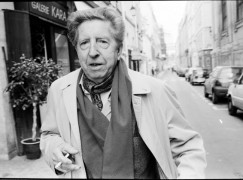
photo (c) Marion Kalter/Lebrecht Music&Arts